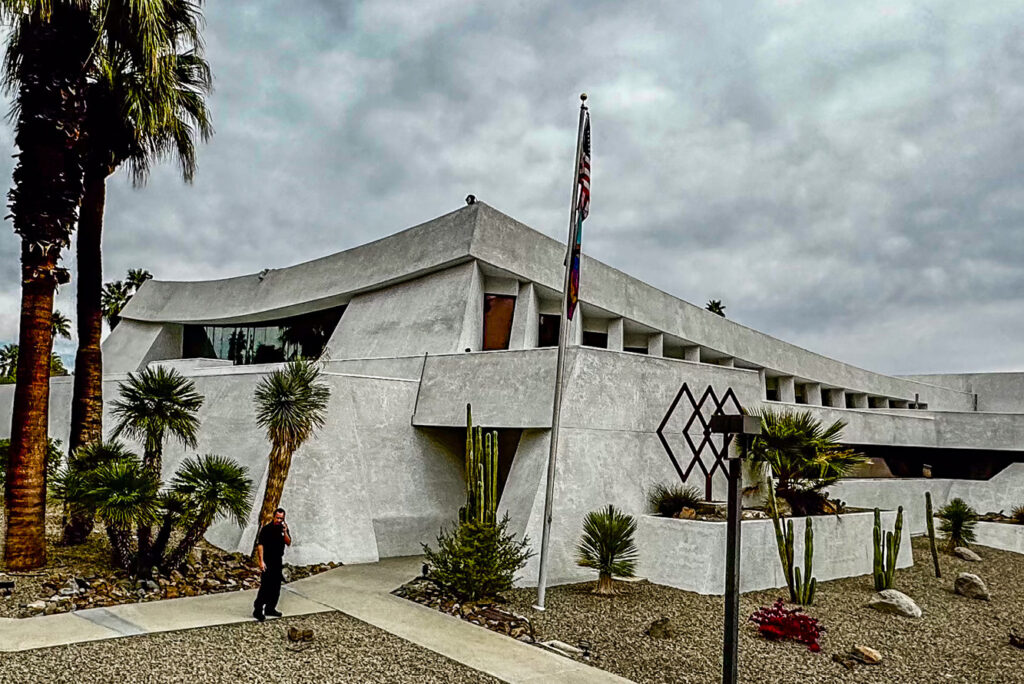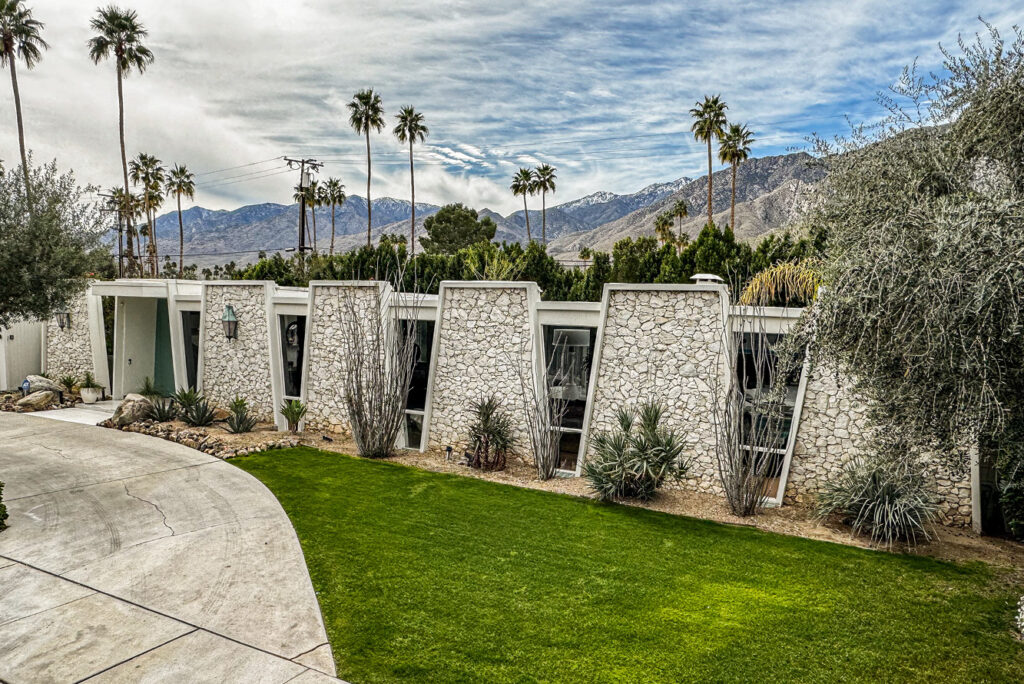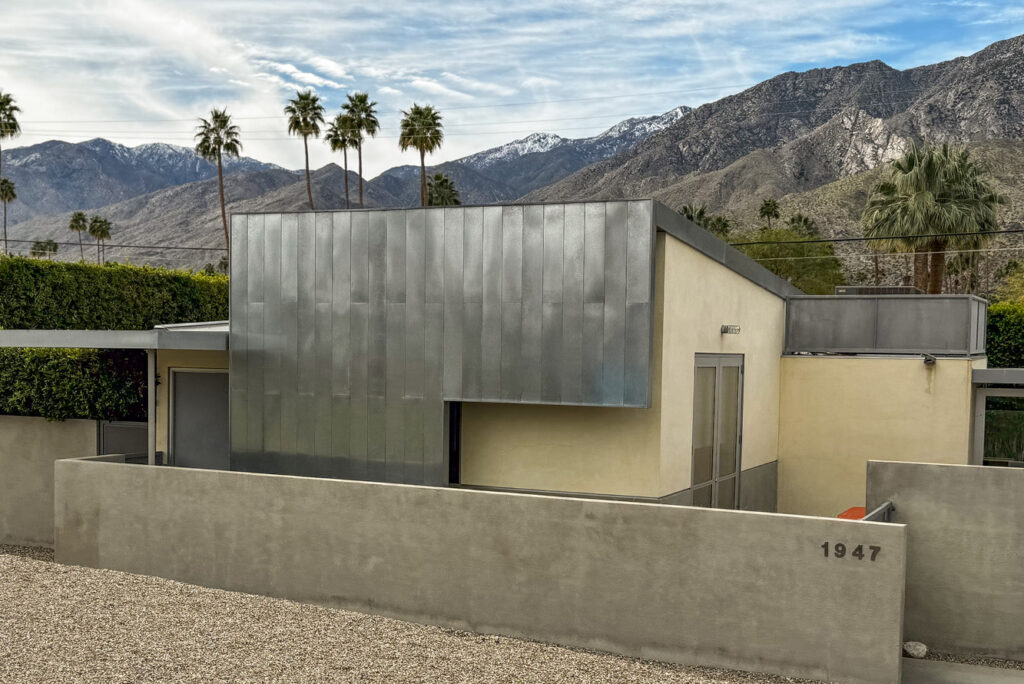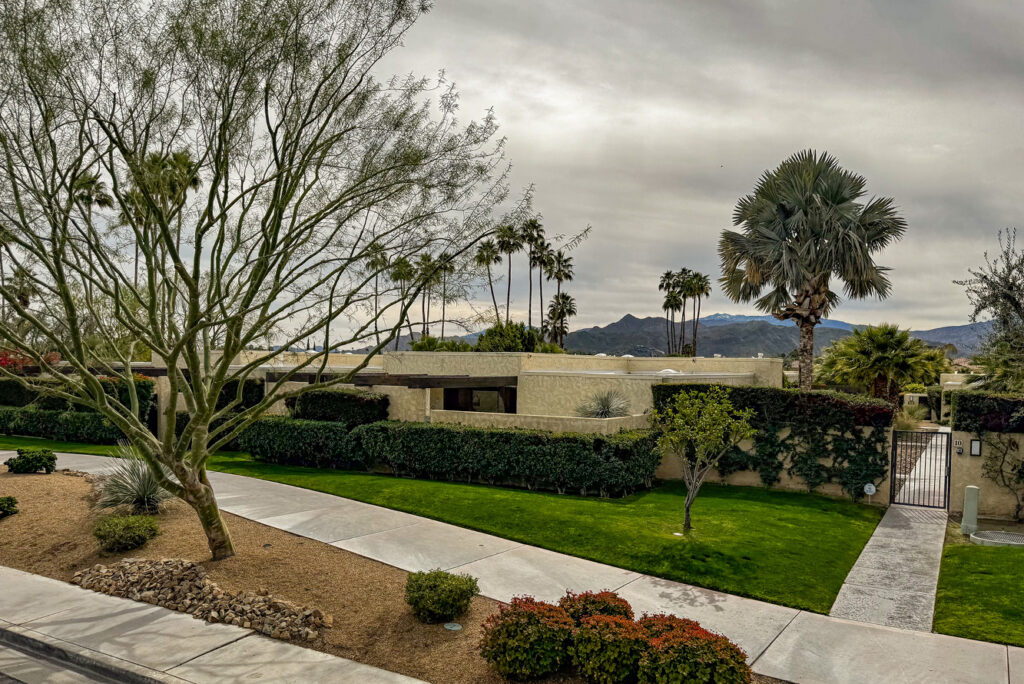I’d be lying if I told you I visit Fort Lauderdale every winter to marvel at its exquisite architecture. Sun, fun, warmth, water, family, and friends are the real draw. Yet I’ve come to appreciate the region’s built environment.
In the early years of my annual visits to the area, I rejected the look and feel of southern Florida. Over time, I began to distinguish good from bad design, arousing my interest in the aspects of the Mid-Century Modern architectural style for its design elements and its symbol of a nostalgic, bygone era of American culture prevalent when I was growing up.
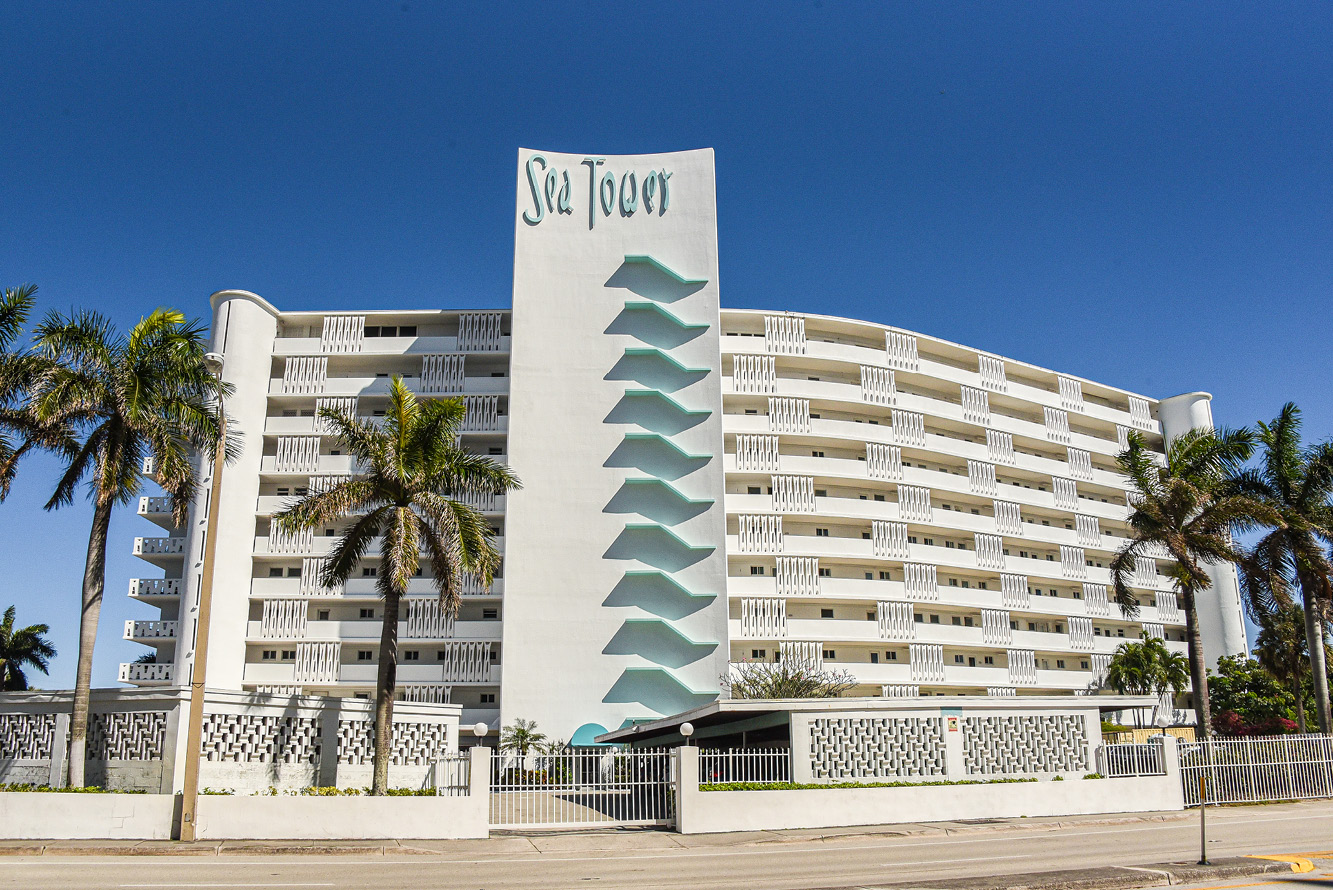
Basic design elements of the Mid-Century Modern (MCM) style represent a radical departure from styles preceding it. Architectural lines are clean, a departure from the ornate, traditional ornamentation of previous styles. Instead, bold geometric shapes characterize both exterior and interior spaces. Floor-to-ceiling windows and sliding glass doors in offices and homes create strong connections to the outdoors. Bright colors and natural materials like stone and wood, as well as concrete and glass, embody this architectural mode.
Fort Lauderdale grew with the revolutionary Mid-Century Modern style
“(Fort Lauderdale was) built on this history of Mid-Century Modern… We are the ultimate post-World War II tourist destination that was brought about by the automobile. We were also the recipient of architects looking for a new playground where they could express new ideas without the constraints of the old ideas…,” observes Abby Laughlin, a midcentury modern artist, developer, and architectural writer. She works to preserve structures that celebrate the style and bemoans the loss of many MCM buildings, especially along the beachfront. Over time, larger, modern structures are replacing MCM classics.
Like all the cities and towns along Florida’s Atlantic seaboard, Fort Lauderdale developed and grew rapidly during the middle of the twentieth century, as the MCM architectural style emerged. It expressed a post-war optimism and spirit of possibility about the future. Architects like Eero Saarinen and I. M. Pei left Europe after World War II for America, the land of wide-open opportunities, to help create and popularize this new architectural expression.
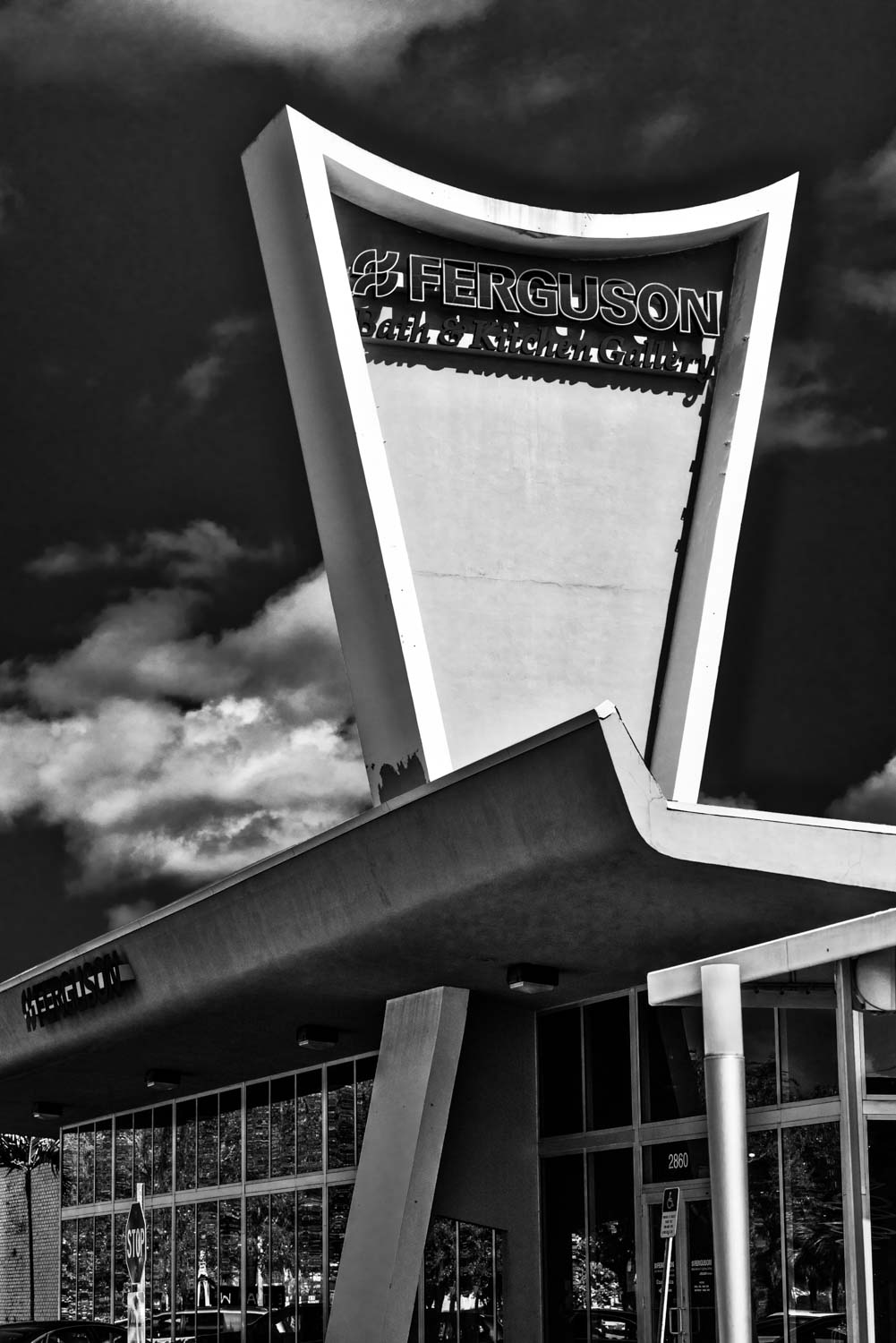
The City Exudes a Retro Feel
Several notable commercial and retail buildings exemplifying the MCM style pepper the Fort Lauderdale area. Combined with thousands of residences built in the post-World War II era that contain the MCM design elements in modest ways––ranch and split level homes, many with their sun-filled Florida room additions––the overall urban landscape exudes a retro feel. Even much of the unexciting post-modern architecture from the late twentieth century to present day is often bland enough to integrate into a more-or-less cohesive architectural mid-century feel.
Check out my favorite MCM structures below. Sea Tower condo building occupies a prominent location on the beach. The striking KenAnn Tower, home of Citibank offices, commands all the attention at a major commercial intersection. I’m fond of smaller MCM retail establishments like the Futon Company building, Ferguson Bath and Kitchen, and Miami Carpet (now vacant); and the still thriving tiki-style Mai-Kai restaurant, American TV host Johnny Carson’s longtime hangout in the 1970s and ‘80s.
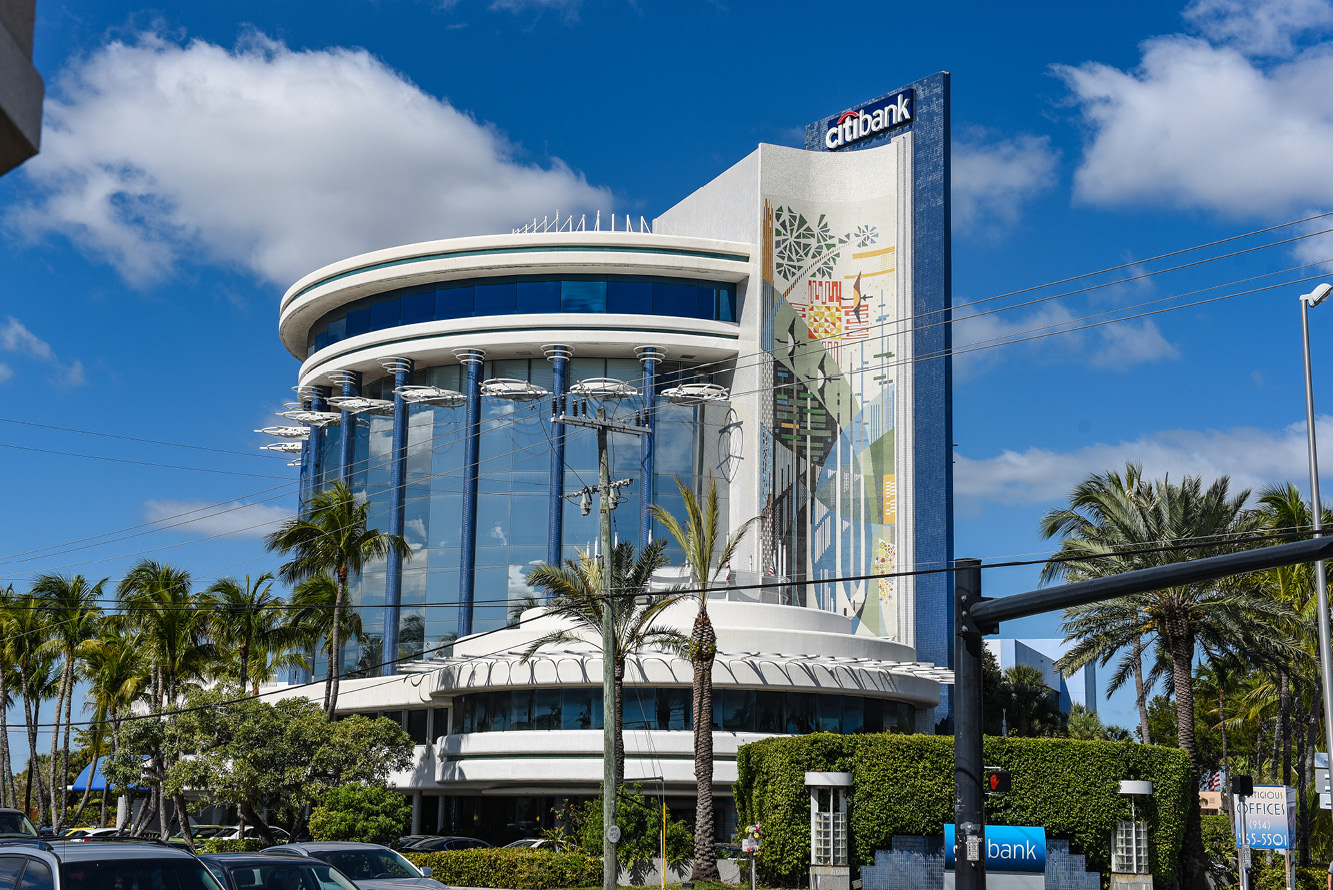
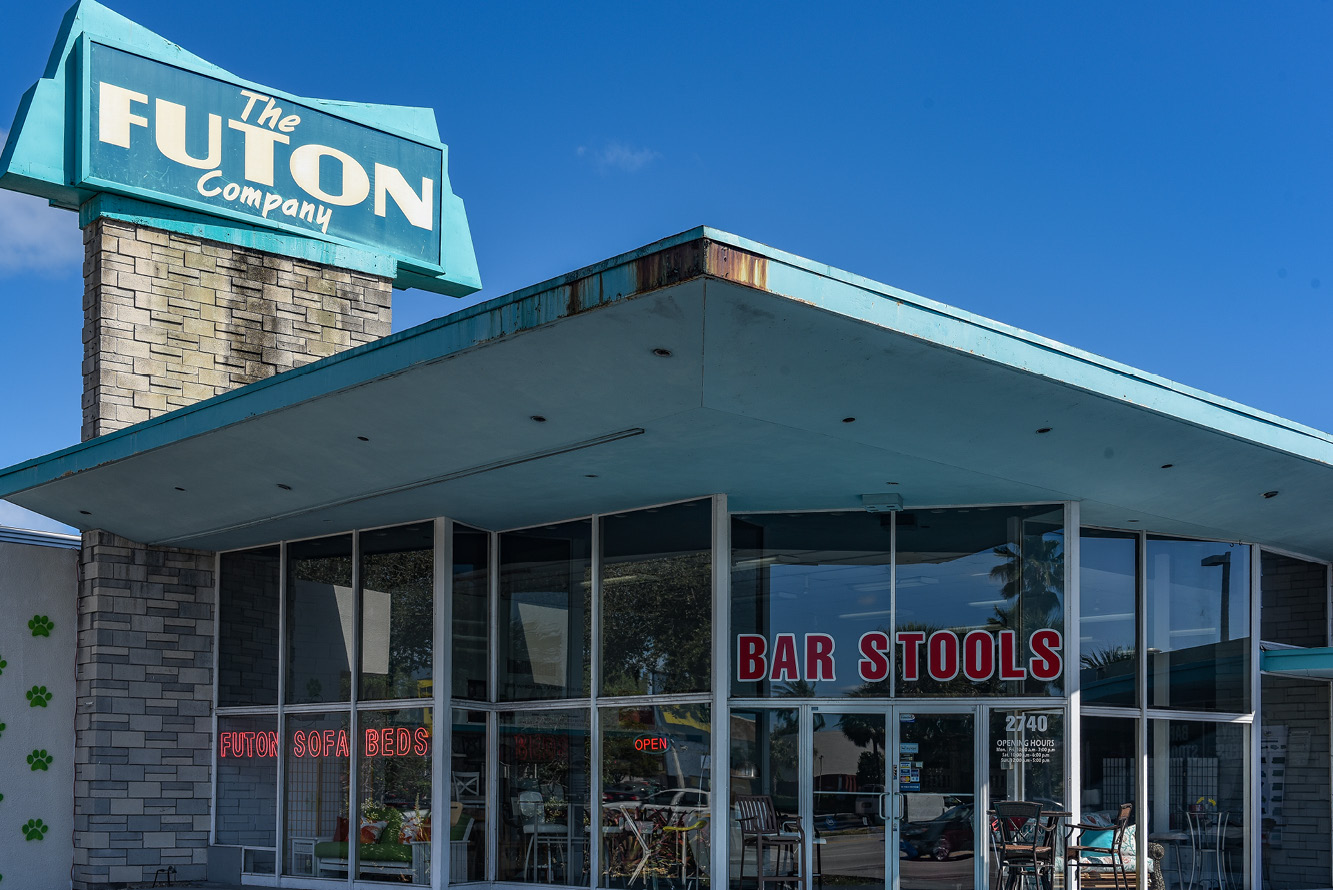
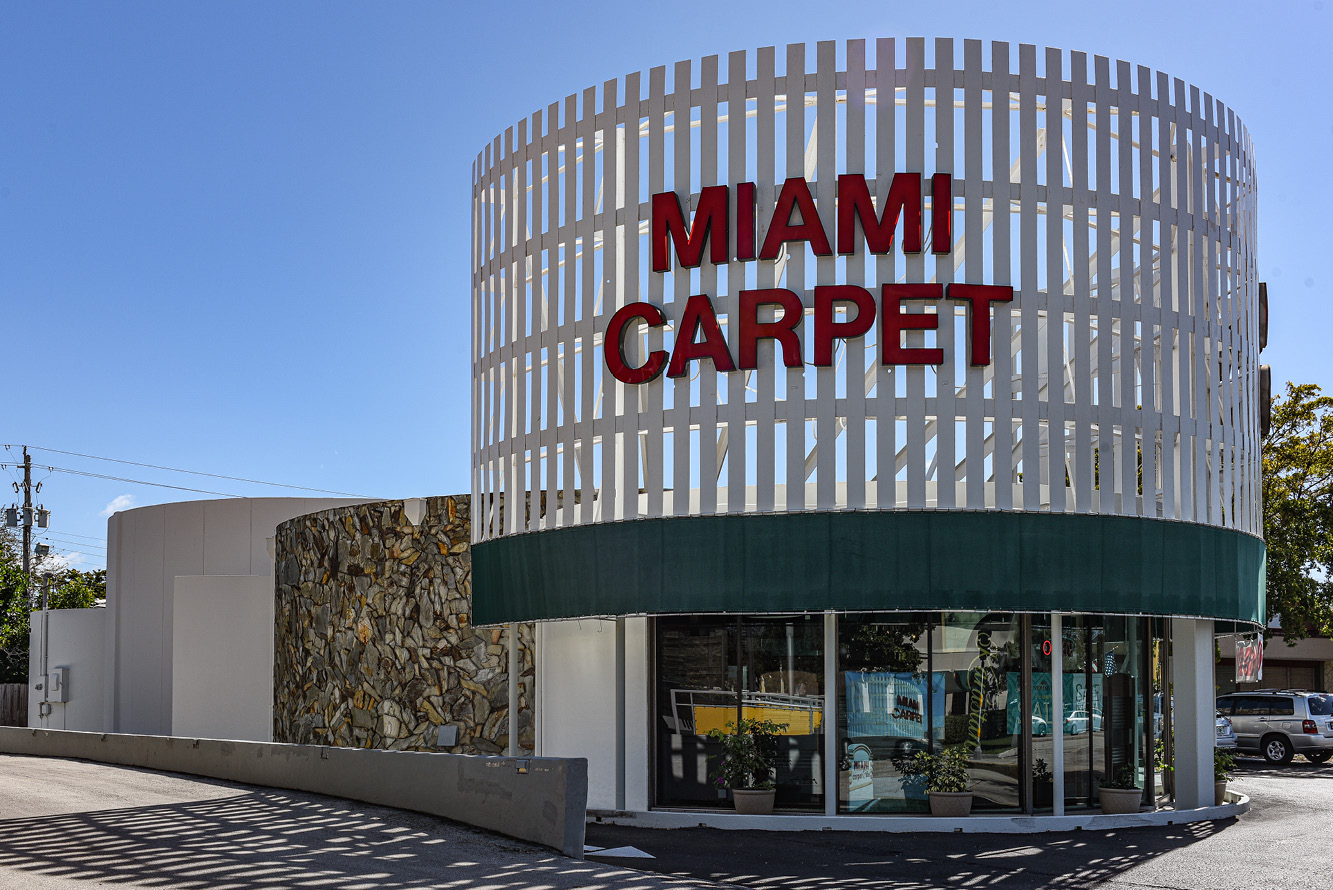
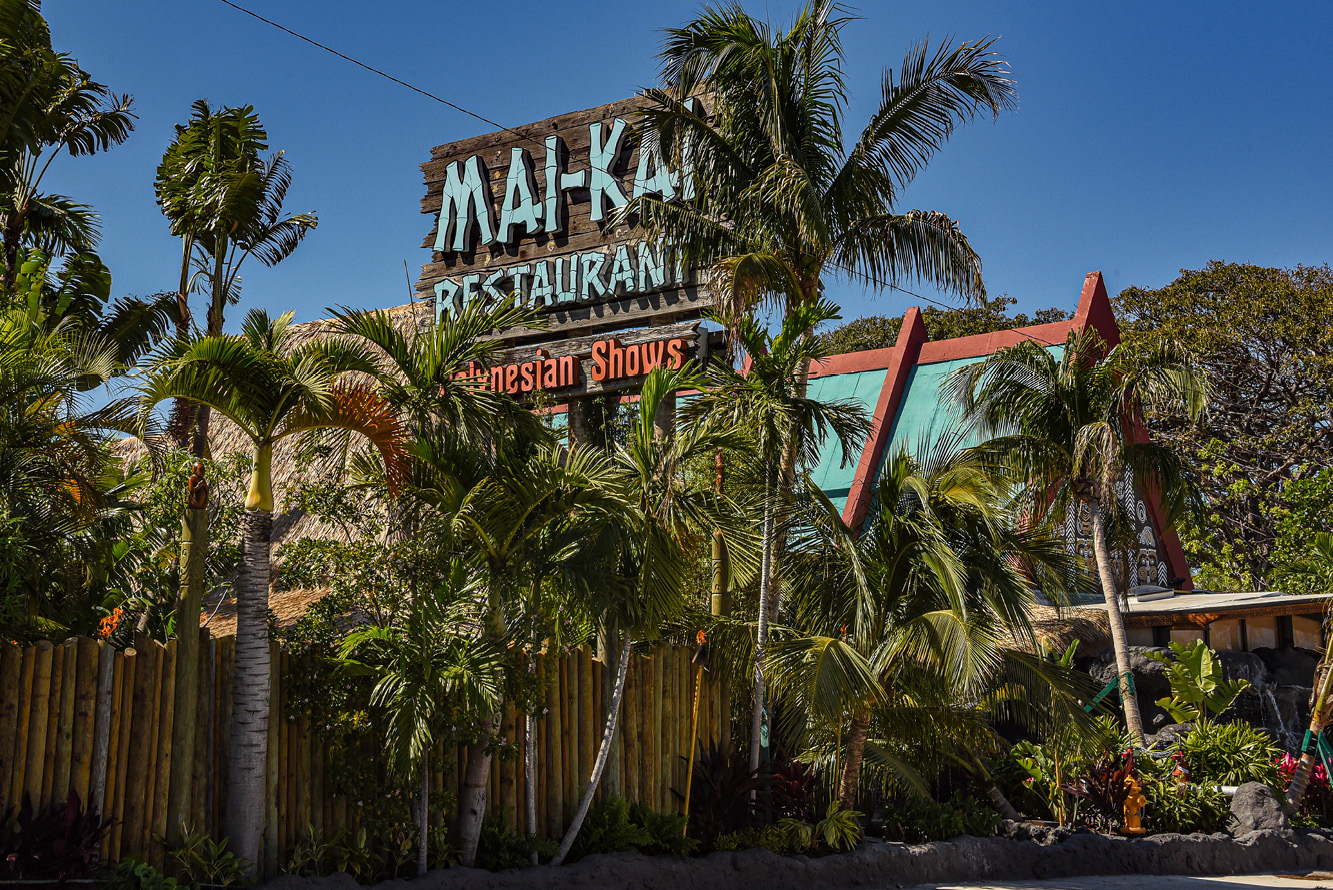
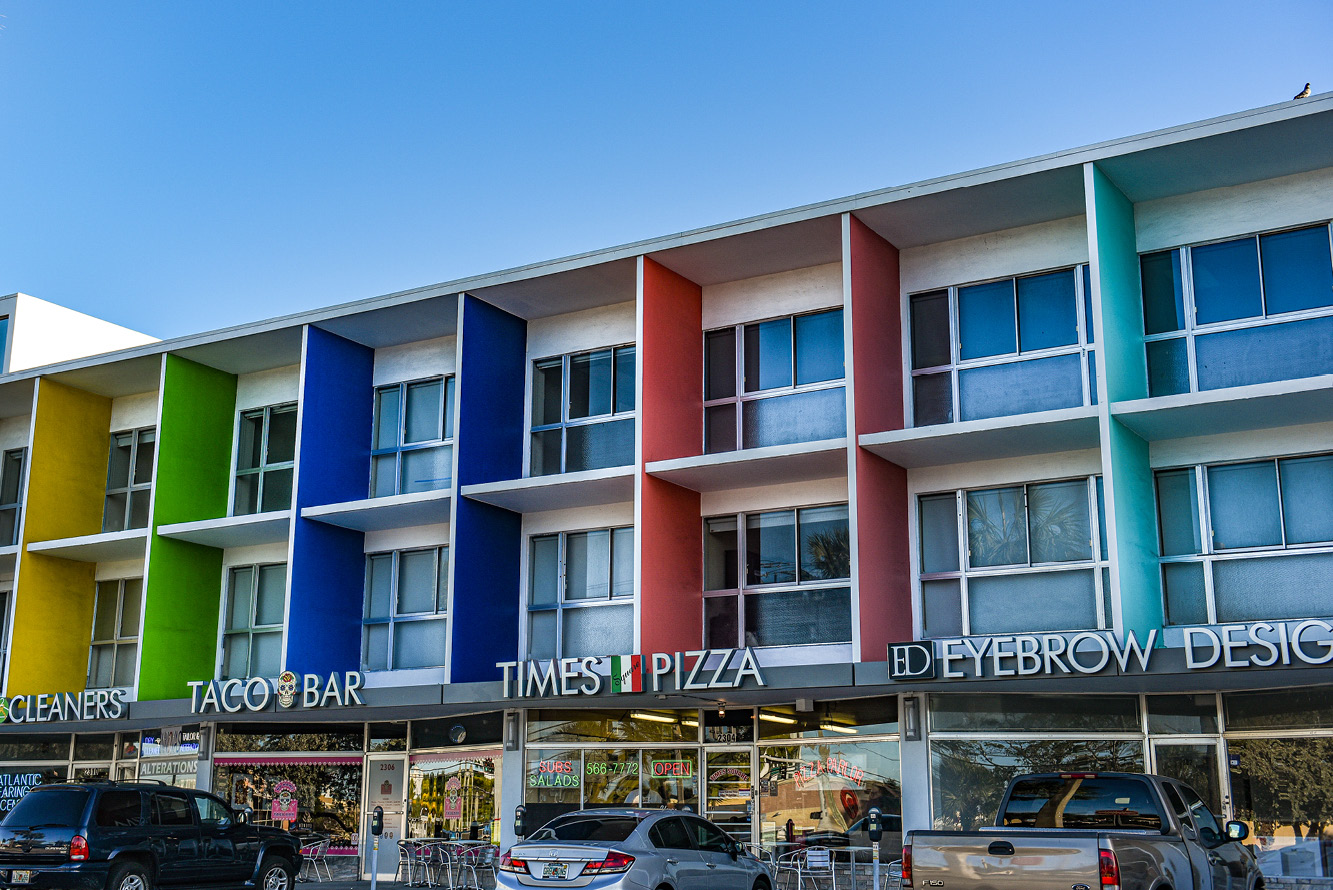
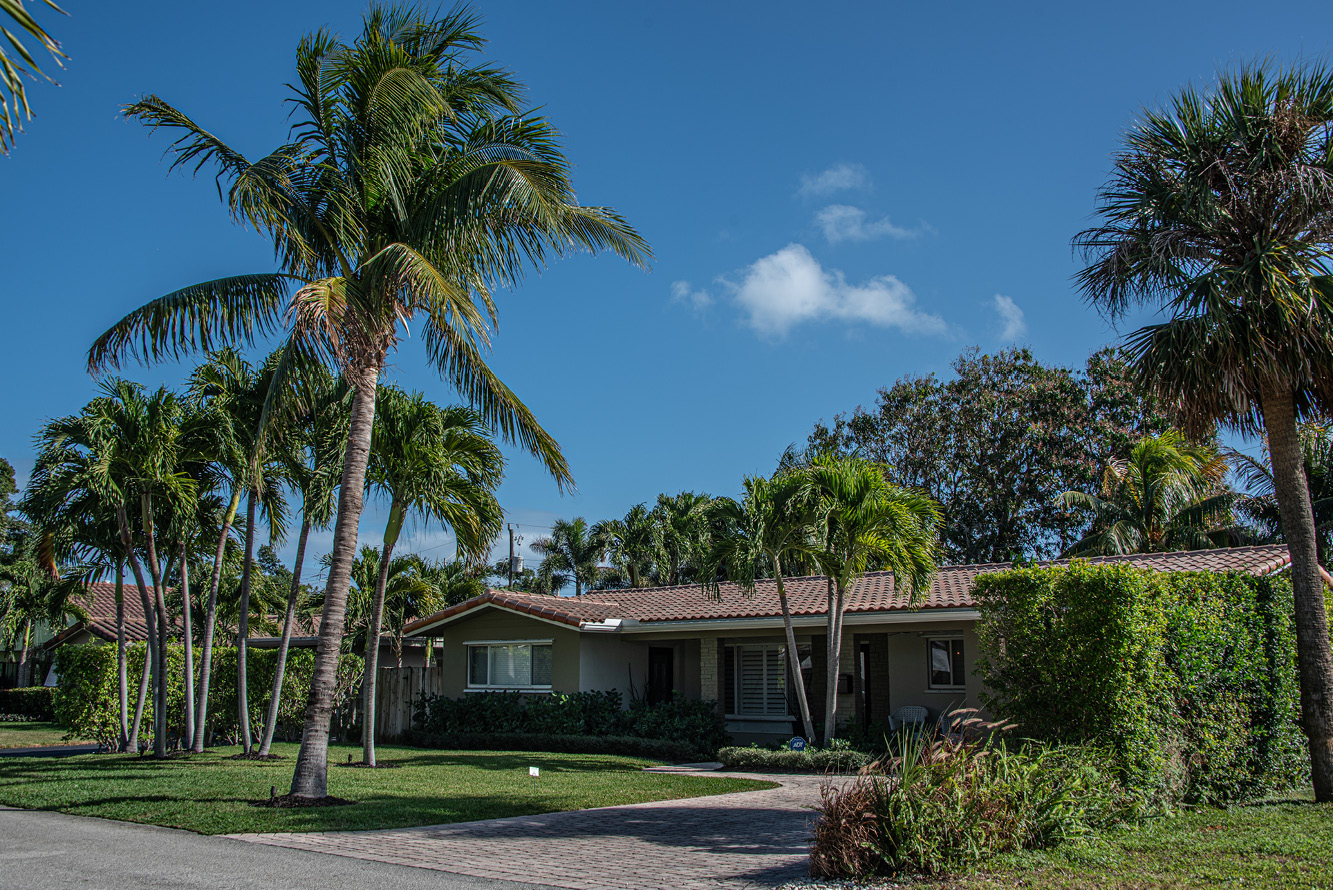
Palm Springs is an Epicenter of Mid-Century Modern Architecture
A few years ago, my husband and I visited Palm Springs, considered one of America’s best repositories for MCM architecture. Every February, the non-profit Modernism Week hosts an 11-day festival with both bus and walking tours of private homes, commercial and public buildings, plus art, interior design, landscapes, and vintage culture of the mid-century period. The annual festival attracts architects and designers from near and far, plus thousands of lay enthusiasts like us.
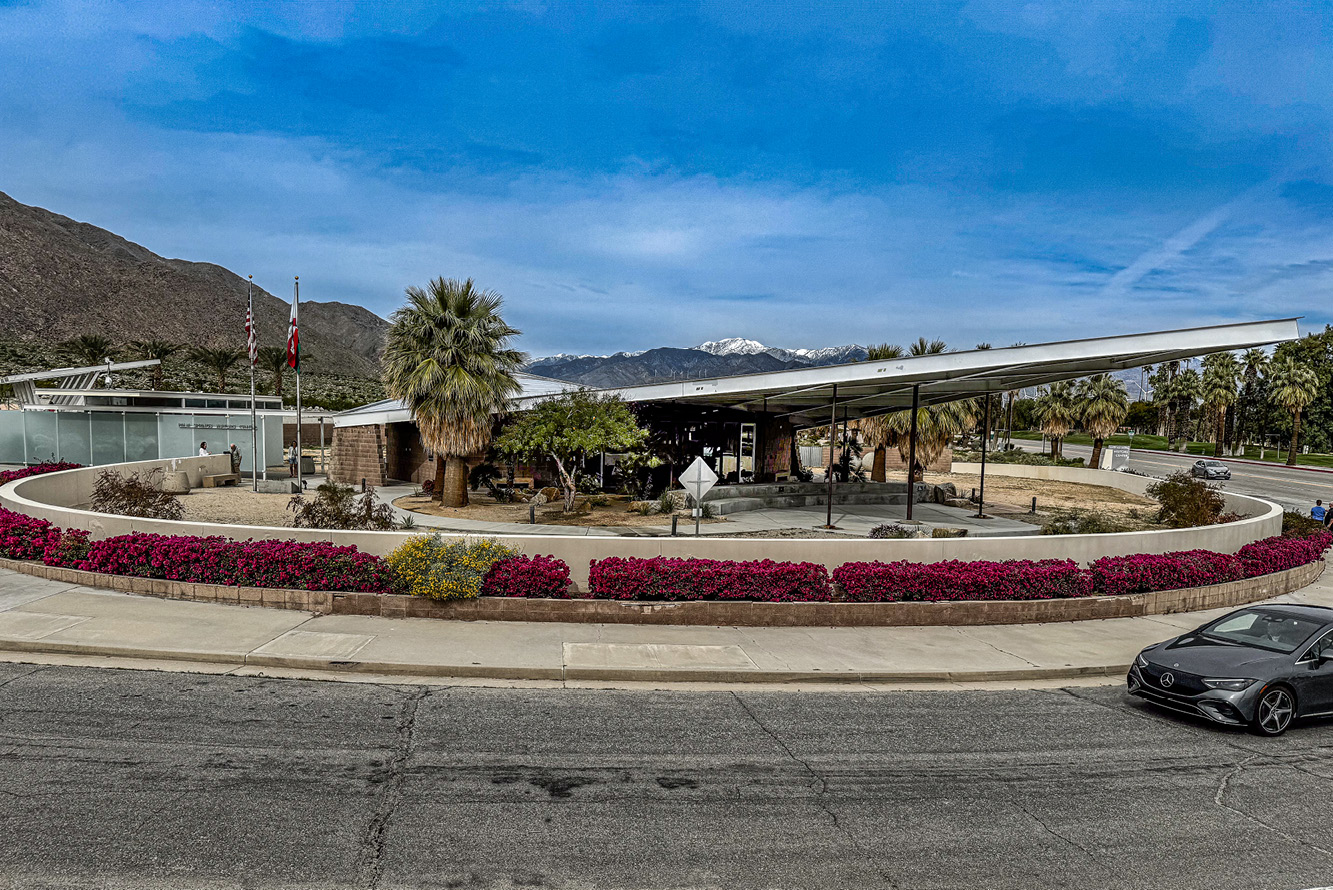
We caught the last five days of the festival; many activities and events were already sold out, so next time we know to make reservations online weeks in advance. An open double-decker bus toured us through residential neighborhoods, including Las Palmas and the Movie Colony, where the rich and famous twentieth century stars––Marilyn Monroe, Debbie Reynolds, Elvis Presley, Frank Sinatra and his Rat Pack buddies, among many more––enjoyed their lavish Mid-Century Modern digs. A 30-foot tall sculpture of Marilyn’s iconic pose with her dress billowing up while standing over a subway grate from 1955’s The Seven-Year Itch catches everyone’s eye as an iconic symbol of an era.
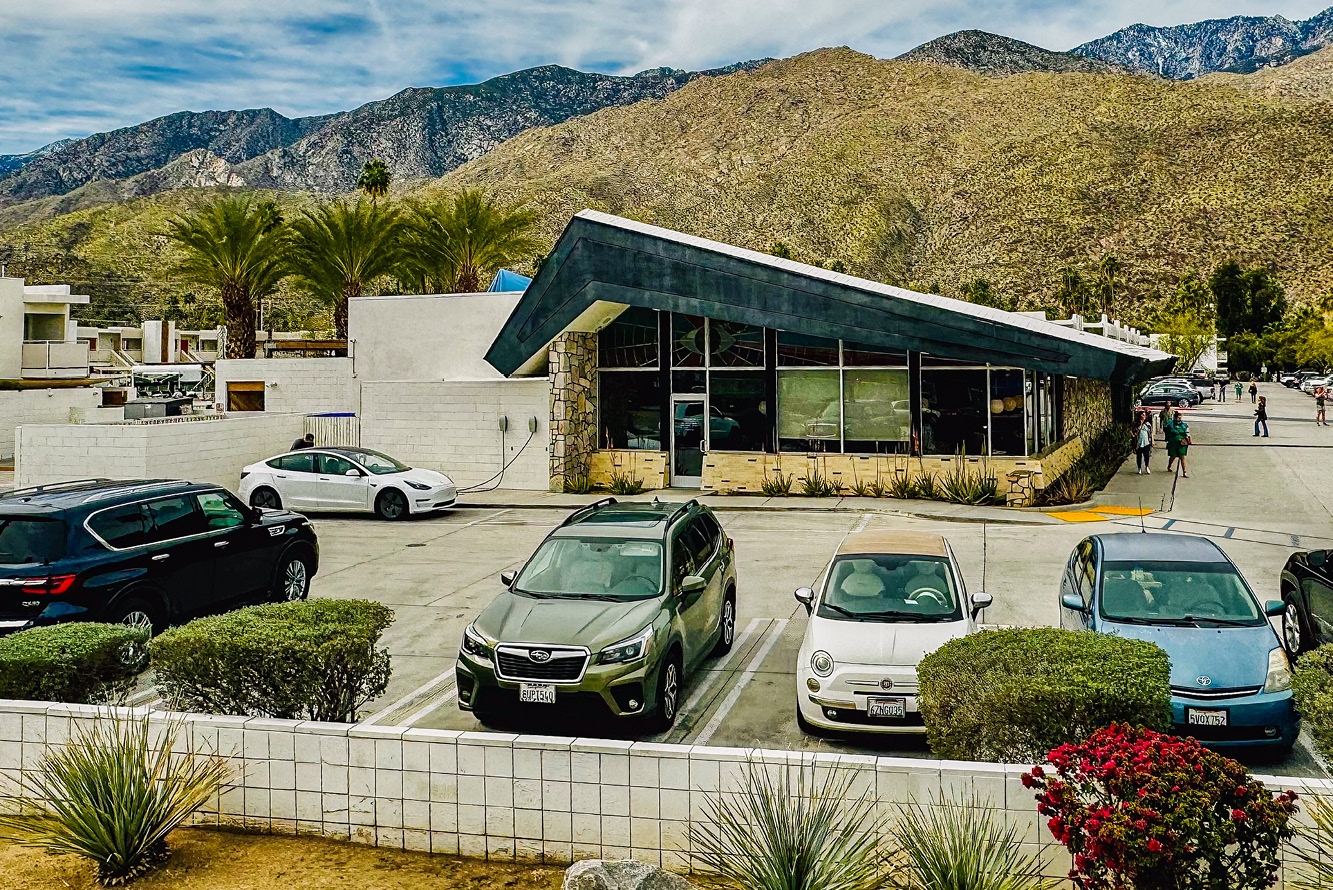
Natural and concrete materials comprise exteriors of exclusive private residences
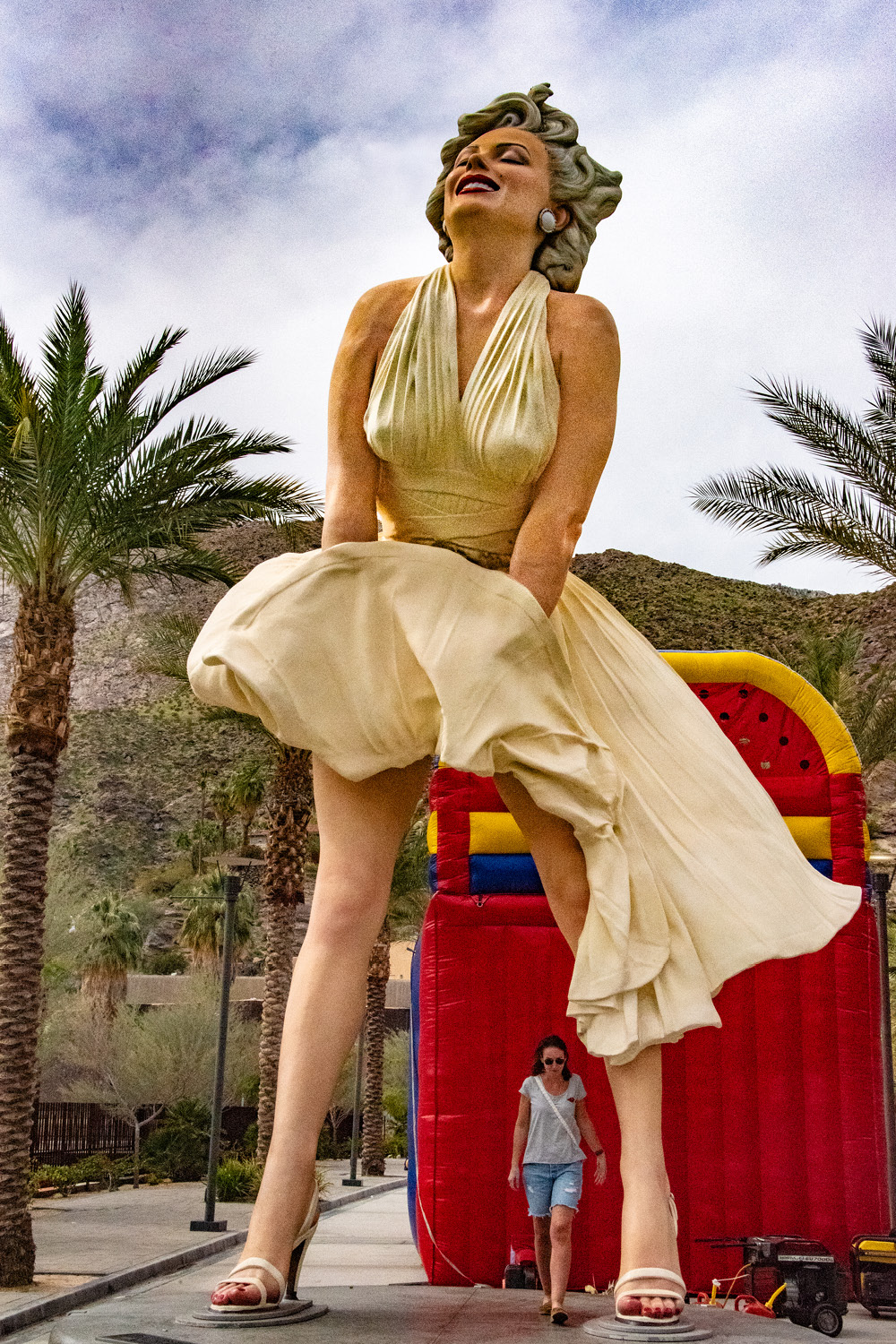
We toured the Lautner Compound, once a private residence designed by Frank Lloyd Wright protégé John Lautner in the nearby Mojave Desert. The site includes a four-unit prototype vacation house development that was never completed. The property is now a celebrated wedding venue where guests can stay in the tiny, exquisitely refurbished bungalows outfitted with mid-century furnishings, kitchens, and baths. A private cactus garden sets off each bungalow
Consider a visit to this California desert city next year to catch this impressive festival. Check out modernismweek.com.
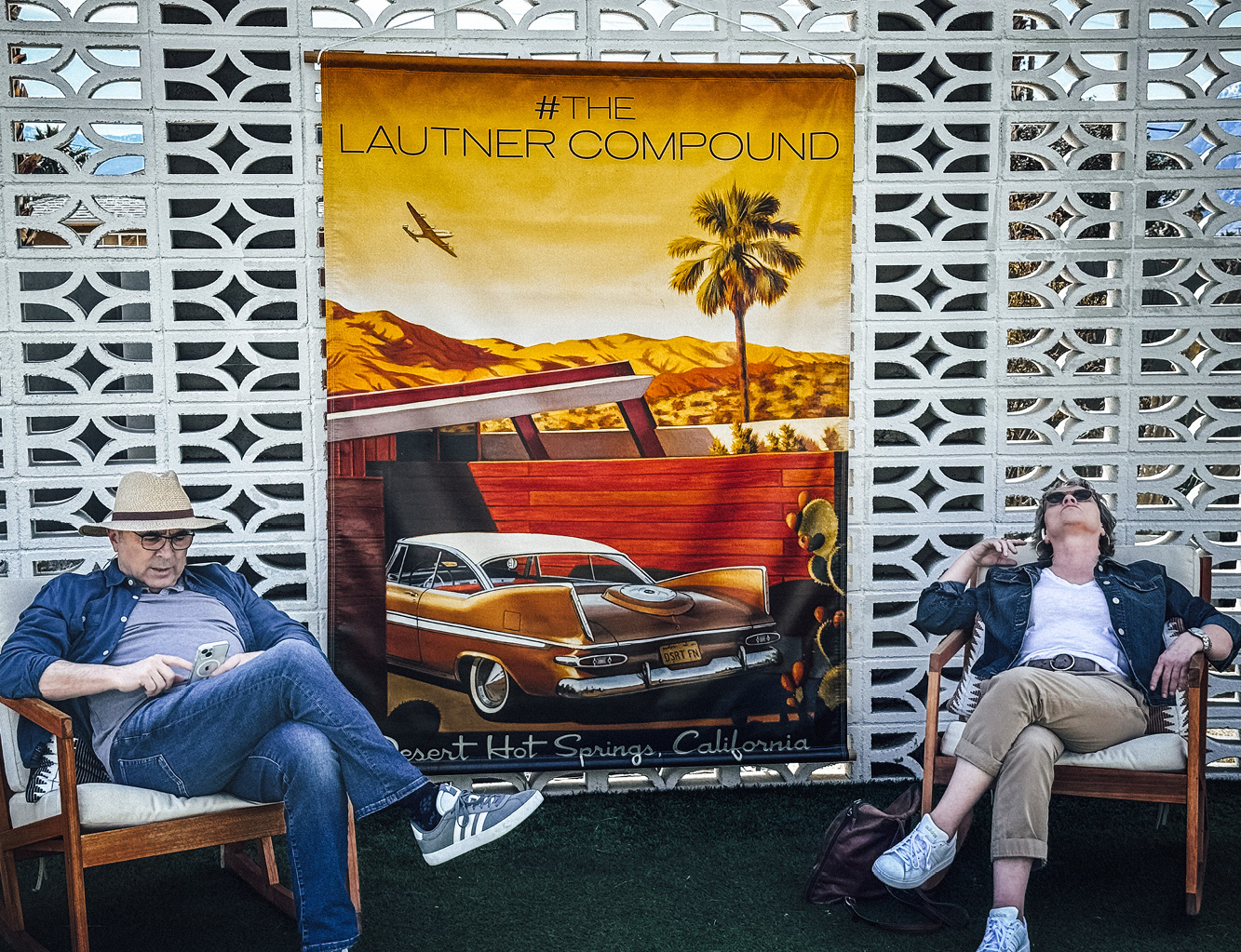
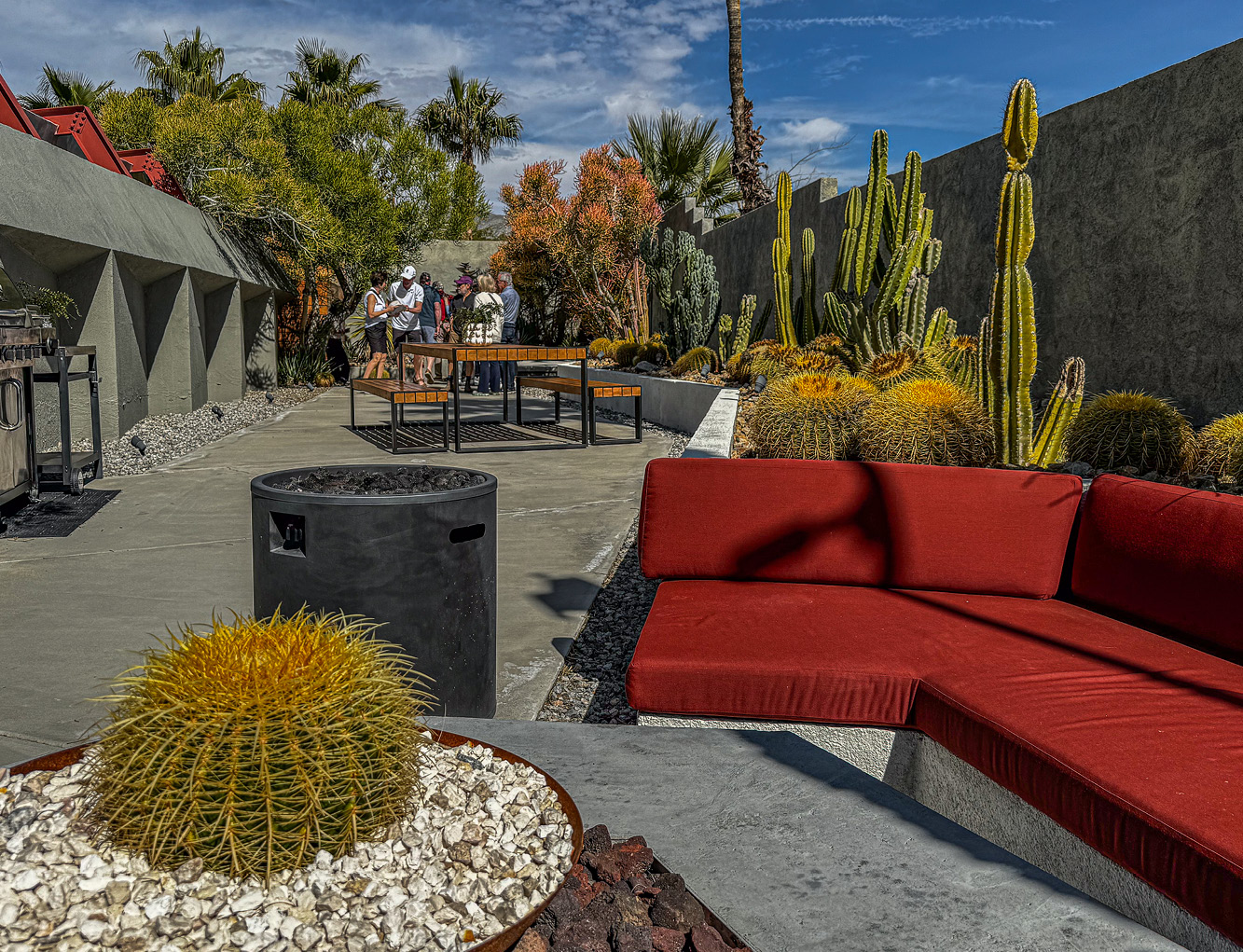
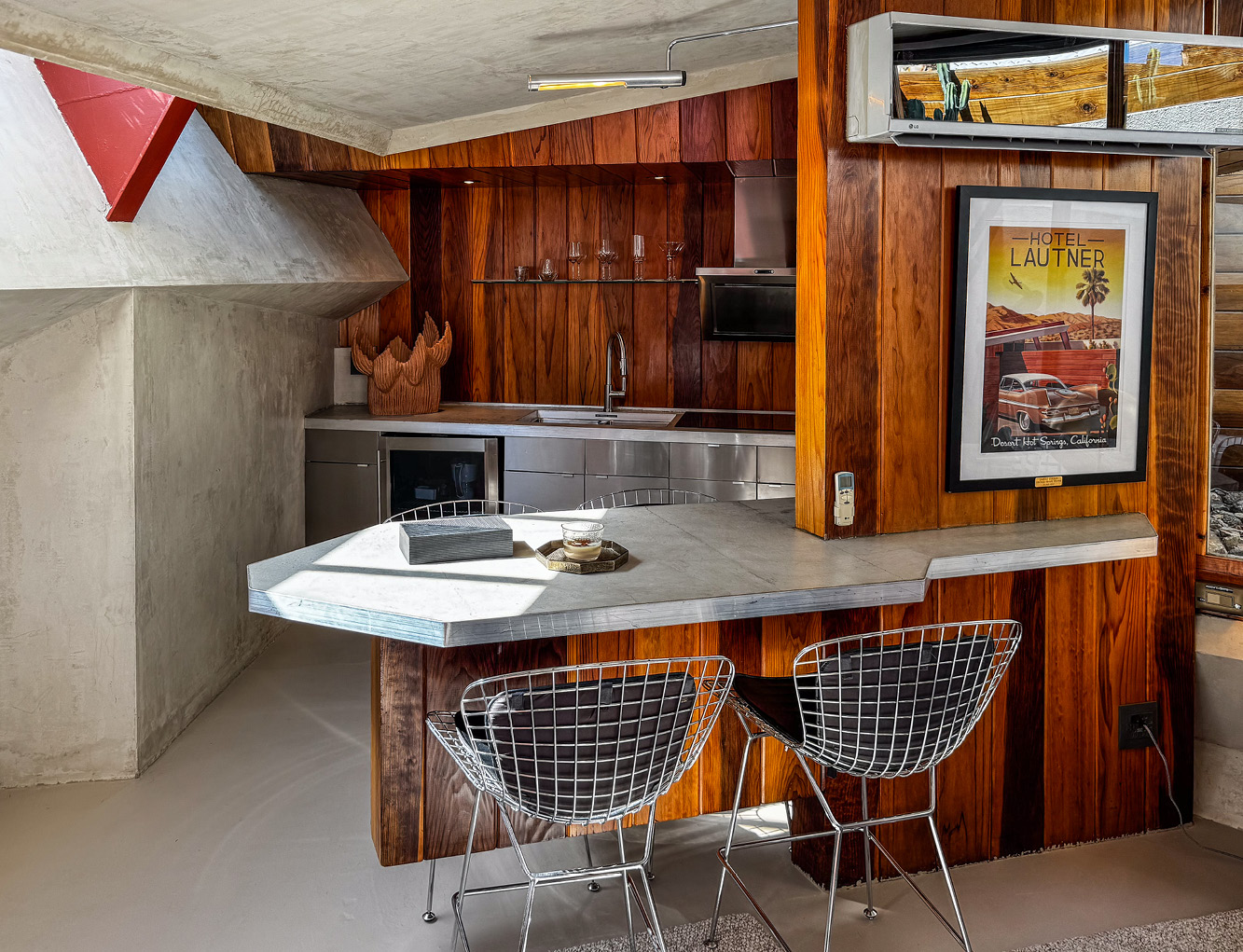
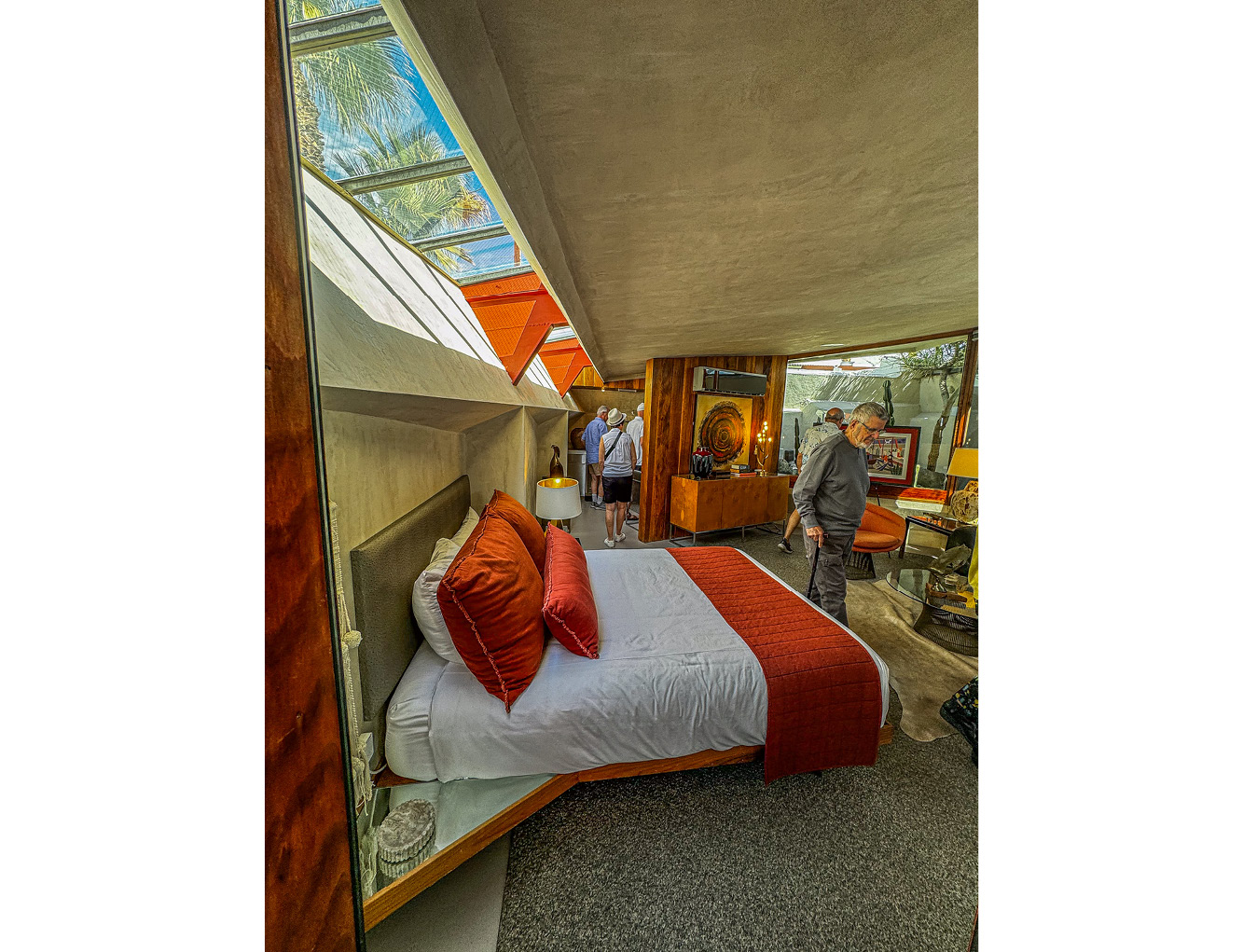
Philadelphia Sports a Few Buildings in the MCM Style
Philadelphia does have a few notable examples of MCM style. I asked Inga Saffron, author, beloved architectural critic for the Philadelphia Inquirer, and Pulitzer Prize for Criticism winner about the style’s presence in our city, which is dominated with colonial and nineteenth century architectural genres up through early twentieth century Art Deco.
Particularly exemplary, she notes, the Roundhouse at 7th and Race Streets, once the city’s police administration headquarters, now lies vacant. Says Saffron, “The Roundhouse was structurally groundbreaking and well ahead of its time aesthetically.” (The Philadelphia Historical Commission voted down a nomination to preserve it on the city’s register of public places, exposing the curvy building to a future date with the wrecking ball.)
Saffron cites other examples: Center City’s former Rohm and Haas headquarters and District 1 Health Center; Old City’s former National Food Services headquarters, now an apartment building; and the former National Marine Engineers building in the Callowhill district.
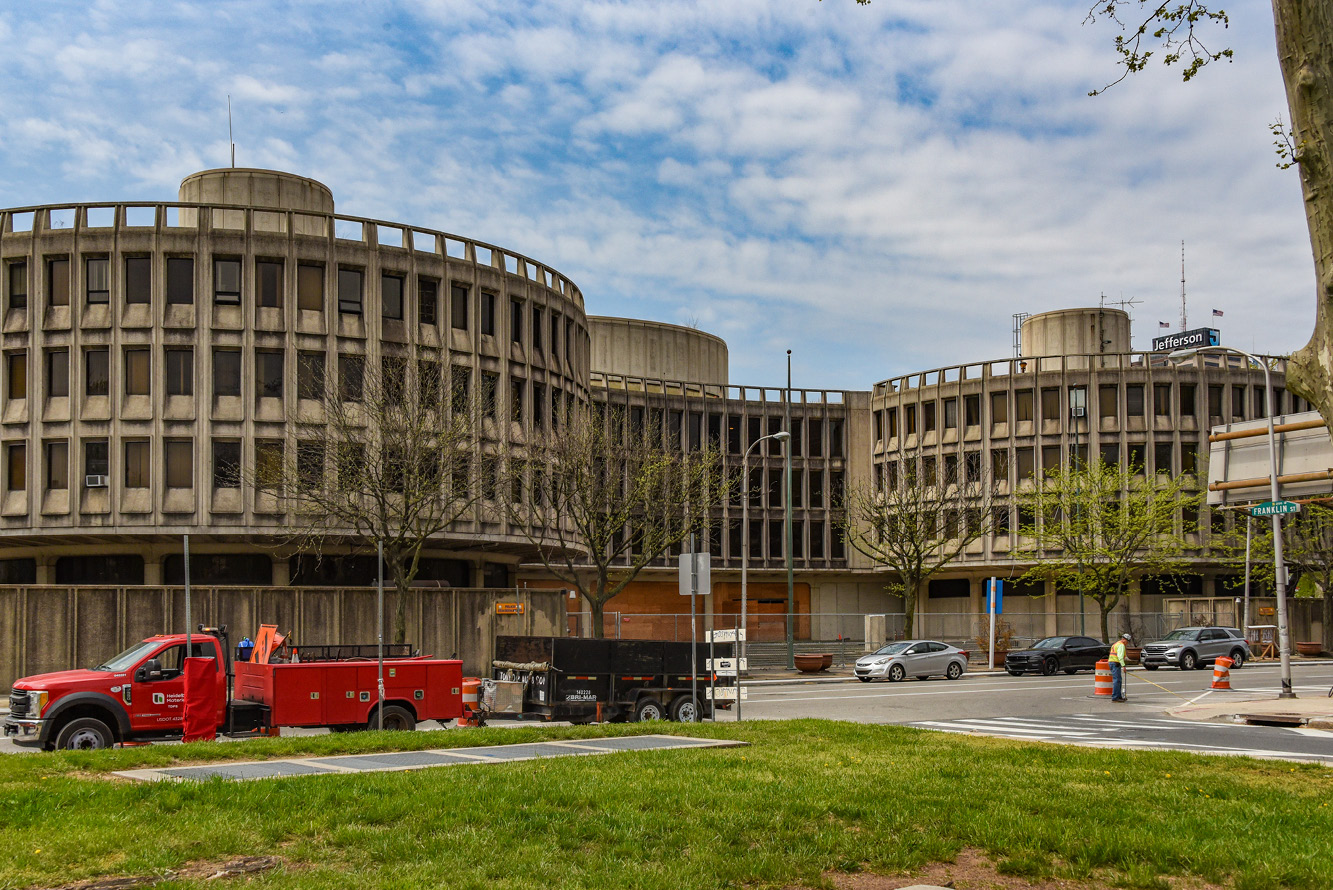
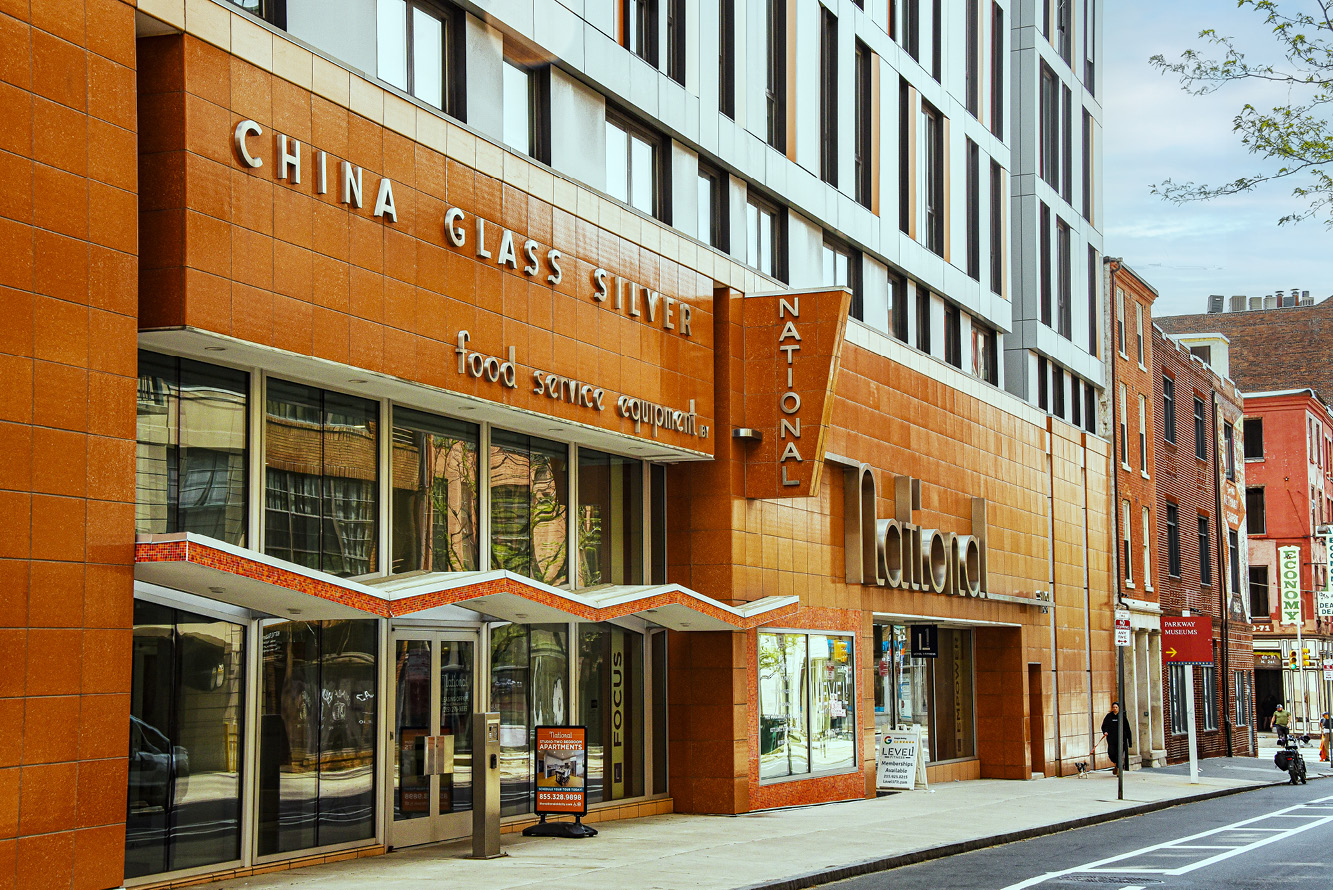
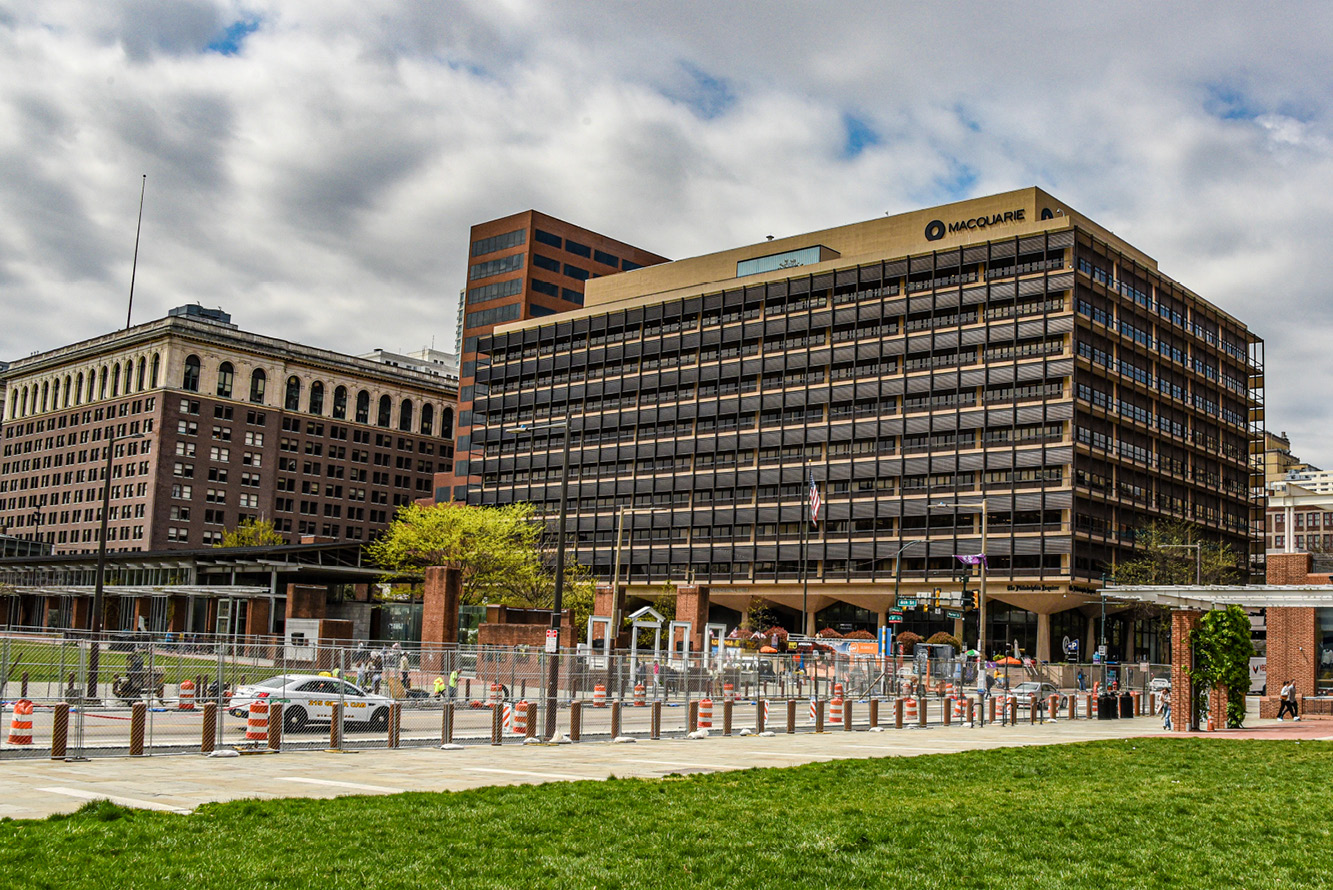
I especially appreciate the MCM style in both Florida and Palm Springs. These sun-filled, relatively young cities seem to accommodate and show off the style’s elements more easily and appropriately than older cities, where many earlier architectural styles layer the urban landscape. I’ll continue to seek undiscovered examples of Mid-Century Modern architecture that signified the bright promises of the future when they were built, even if those promises were made 70 years ago.

